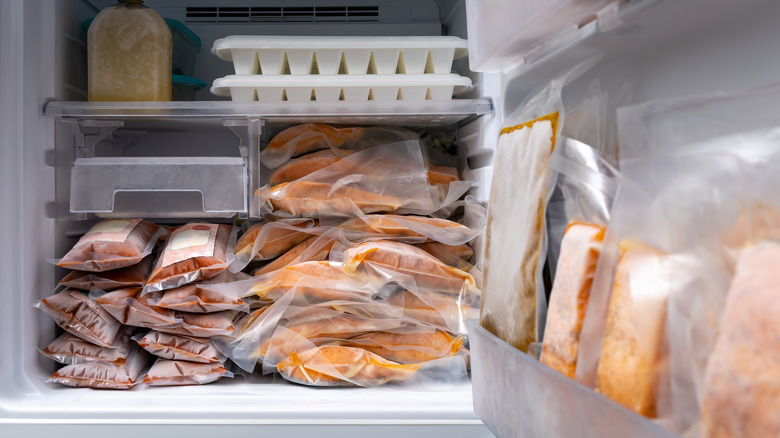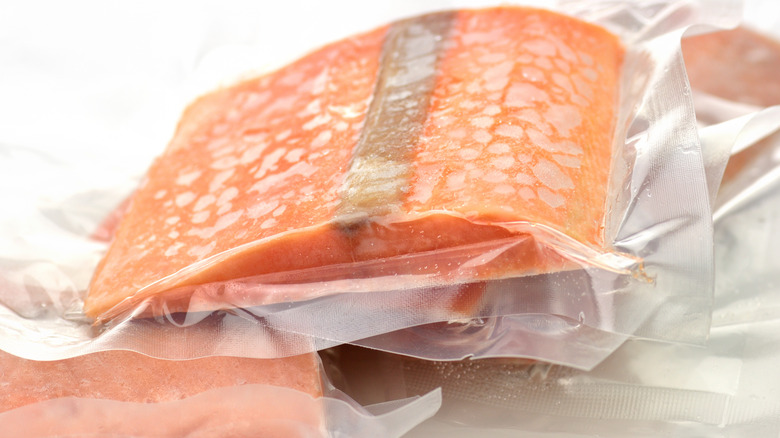How To Correctly (And Safely) Defrost Salmon
Frozen food may get a bad rap; but, when it comes to salmon, it's possibly some of the highest quality you can get. Most wild fish are professionally frozen while still out at sea — straight from the deep ocean to the industrial freezer onboard the vessel. Not only does this lengthen the shelf-life but flash freezing also stops time in its tracks — meaning that frozen fish is as close to fresh as filleting, cooking, and eating it right then and there onboard the ship.
The only downside to stocking your freezer with this fresher-than-fresh fish? The planning and time it takes to defrost it when you're ready to consume it. While it's always tempting to pop it in the microwave, not only do you jeopardize the texture and taste but you also walk a fine line with safety.
There are a couple of options for defrosting salmon. Both are correct — and will get dinner on the table when timed well — but one is faster while the other is easier and safer. What do you need to know?
How to defrost salmon safely
The easiest method for defrosting frozen salmon is to allow it to slowly thaw out in the refrigerator for many hours, usually overnight.
What makes this method the safest is the regulated temperature. When it comes to food safety, the USDA recommends staying out of the "danger zone." This off-limits territory lies between 40 and 140 degrees Fahrenheit. Why? This is the temperature range when bacteria begin to grow. Anything colder than 40 degrees or hotter than 140 degrees will halt the growth. Within the danger zone, bacteria can flourish.
Taking that salmon out of the freezer and leaving it on the counter to defrost has high odds of bringing you into this zone. If you've ever noticed the temperature setting on your refrigerator, the standard is below 40 degrees. Popping the frozen salmon in there will allow it to thaw while ensuring it doesn't go anywhere near the danger zone.
To maintain the integrity and flavor of the salmon flesh as it defrosts, remove it from whatever packing it was in and place it on a plate or in a container that will catch any liquids. Place it in the coldest part of your fridge and let it do its thing, but for no longer than 24 hours.
A quick defrost method for when time is tight
While the fridge method is easy and safe, it does require some forethought and meal planning. Not only must you know what you want to make for dinner the next night but it also requires setting a mental, physical, or electronic reminder to make the icebox-to-fridge trade a day in advance. What if you decide at the last minute you want to dig into that wild salmon in your freezer?
The quickest way to defrost salmon while avoiding the danger zone is doable but involves an extra step and an eye on the clock. If you only have an hour or so, returning the fish to its natural habitat — water — will help you defrost it fast. While it's tempting to leave it in its packaging, remove the frozen salmon and place it into a plastic baggie. Fill a bowl with cold (not warm or hot) water and submerge the fillet. You may need to use a plate, mug, or can of beans to keep it under the water. To keep the water temperature outside of the danger zone, check on it and change it every half hour until the fillet is thawed.


